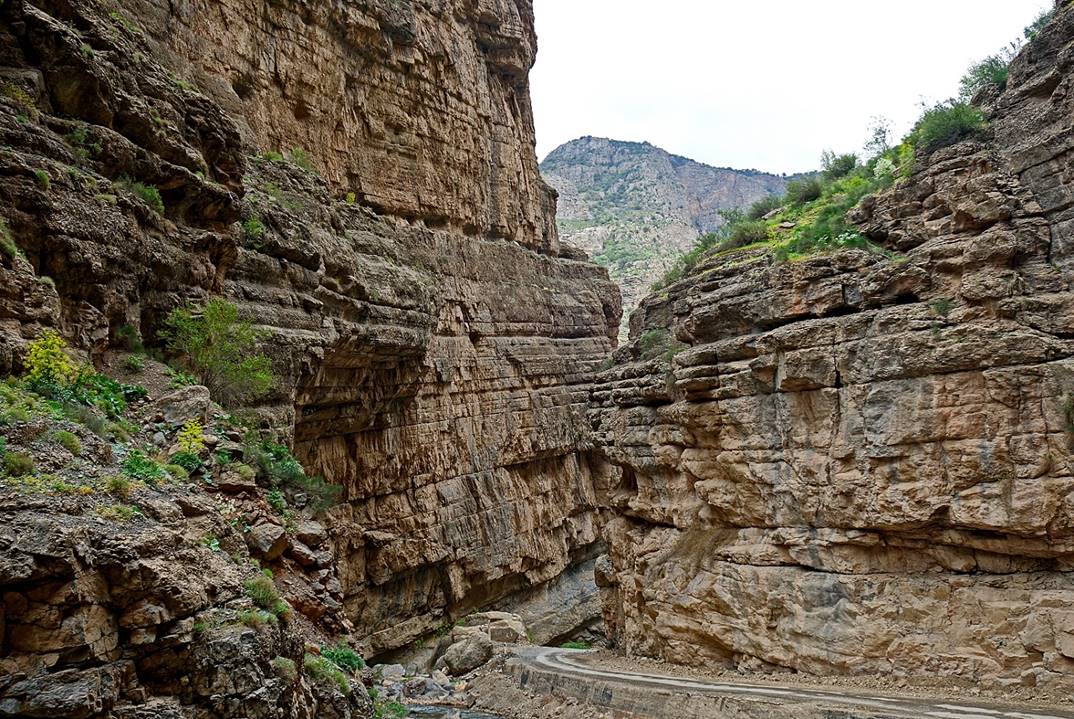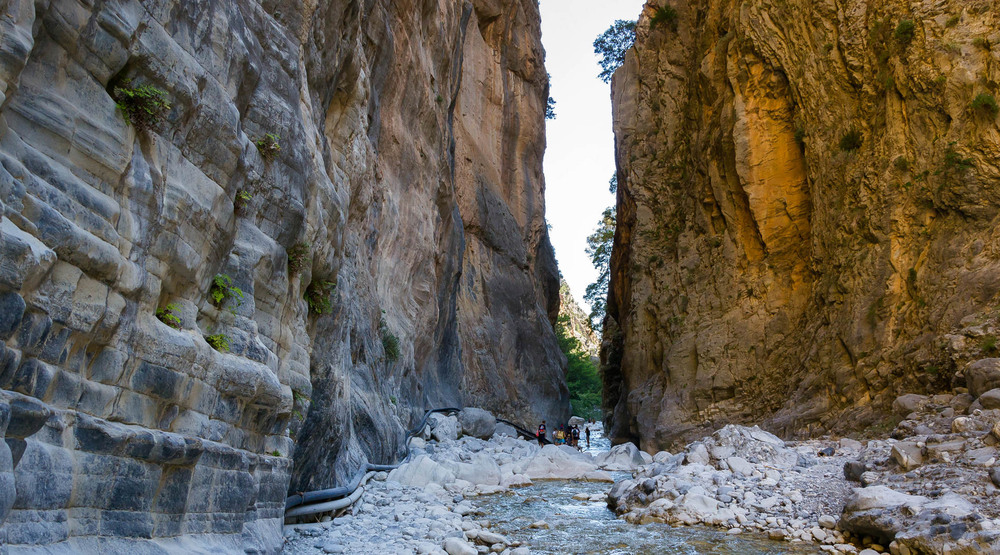For several millennia, the mysterious Surkhandarya has attracted the attention of conquerors, travelers and explorers. The southern region of Uzbekistan is fascinating for its ancient monuments, natural attractions and cultural heritage. One of the most mysterious places, perhaps, in all of Central Asia – the famous mountain pass - Iron gate, located in the Baysun district on the territory of the village of Derbent.
In the Middle ages, the pass occupied an important strategic place, as it was followed by numerous trade caravans and troops. It was the shortest way to get from Bukhara, Samarkand and Chach (Shash) to Bactria and India, and back from India and Bactria to the Central cities of Central Asia. The Iron gate has been repeatedly mentioned in written sources of Chinese, Central Asian, and Arab historians and geographers. In 630, Xuanzang described in his notes the gorge as a defensive passage covered with iron and locked with a double-leaf gate. The famous Arab geographer Al-Yaqoubi tells about a 9th-century city in Sughd and also mentions this passage. Another Chinese chronicle tells of a city, a temple and an Iron gate that got its name because of it’s color and iron. The Arab writer and historian Ibn-Arabshah called the gate "Qagalgar", in particular, tells in some detail about the battle of Amir Timur with Emir Hussein in this territory. In his two poems about the gates of Sogdiana, Alisher Navoi mentioned and Babur in his work "Babur-nameh".
In 630, Xuanzang described in his notes the gorge as a defensive passage covered with iron and locked with a double-leaf gate. The famous Arab geographer Al-Yaqoubi tells about a 9th-century city in Sughd and also mentions this passage. Another Chinese chronicle tells of a city, a temple and an Iron gate that got its name because of it’s color and iron. The Arab writer and historian Ibn-Arabshah called the gate "Qagalgar", in particular, tells in some detail about the battle of Amir Timur with Emir Hussein in this territory. In his two poems about the gates of Sogdiana, Alisher Navoi mentioned and Babur in his work "Babur-nameh".
Rui Gonzales de Clavijo, a Spanish diplomat and traveler, was passing through this gate. Following to Transoxiana to receive Amir Timur, in his" Diary of a journey to Samarkand to the court of Timur " (1403-1406) gave a detailed description of his journey through the gate:
"The next day, Monday, we rested at the foot of a high mountain, on the top of which stood a beautiful cruciform building, elaborately made of brick, with many patterns made up of colored tiles. This mountain is very high, but it has a passage through which you can cross it by a cleft that seems to have been made by human hands: high mountains rise on both sides, and it is flat and very deep. In the middle of this passage there is the village piled above him at the top of a high mountain. And this passageway in the mountains is called the Iron gate, and there is no other passageway in the whole area but this one. He defends the Kingdom of Samarkand from the side of smaler India. And there is no other passage to enter the lands of Samarkand except through it; nor can the inhabitants of the Samarkand Empire enter the lands of India except through this passage. These Iron gates owns señor Tamurbek. And they bring him a large income every year."
In addition, Rui Gonzales de Clavijo mentioned another Iron gate that was located closer to the village of Derbent. Later, academician Eduard Rtveladze concluded that the Iron gate is a common name for a whole complex of defensive structures formed from both natural and artificial structures, and they occupied the territory between the Buzgalakhan gorge and the current village of Derbent.
 Archaeologists have excavated and discovered such monuments as ancient settlements, the foundation of a medieval caravanserai, and the defensive wall of the Kushan Kingdom.
Archaeologists have excavated and discovered such monuments as ancient settlements, the foundation of a medieval caravanserai, and the defensive wall of the Kushan Kingdom.
One of the most interesting conclusions made by the historian Eduard Rtveladze is about the place of refuge on this territory of the father of Roxana, the wife of Alexander the Great - Oxyart.
In the "Sogdian rock" he hid during the capture of the Alexander’s attacks of natural fortresses in Sogdiana. It is also believed that it was in Derbent that Alexander played his wedding with Roxana, a Bactrian Princess. She was described as a beautiful and blooming girl, with whom the General fell in love during a feast, when she led a dance in a circle.









Working hours: 9:00 AM - 6:00 PM, Mon-Fri
For any questions
ПОЛЬЗОВАТЕЛЬСКОЕ СОГЛАШЕНИЕ
1. Определение
Настоящее Пользовательское соглашение (далее — Соглашение) является Публичной офертой в соответствии со статьёй 367 Гражданского кодекса Республики Узбекистан от 21.12.1995 (https://lex.uz/ru/docs/111181#162763) и регулирует порядок использования материалов и Сервисов сайта Государственного унитарного предприятия «Национальный PR-центр» (далее — Предприятие), размещённого на веб-сайте и поддоменах Национального Туристического Информационного Центра: https://uzbekistan.travel/ (далее — Сайт).
Посетитель и (или) Пользователь подтверждает, что ознакомлен, полностью и безоговорочно принимает все условия настоящего Соглашения и обязуется их соблюдать.
Использование Сайта Пользователем означает полное принятие данного Соглашения «как есть» в форме акцепта.
Соглашение вступает в силу с момента посещения любой страницы Сайта и (или) регистрации на Сайте и действует бессрочно во время пользования Сервисами Сайта.
Настоящее Соглашение обязательно для исполнения всеми Посетителями и Пользователями без каких-либо изъятий и дополнительных согласований.
Пользователь обязуется самостоятельно проверять актуальную редакцию Соглашения на Сайте перед использованием Сервисов.
2. Предмет Соглашения
Предметом настоящего Соглашения являются правила использования материалов Сайта и предоставление Посетителю и (или) Пользователю возможности использования Сервисов Сайта.
Предприятие является правообладателем исключительных прав на Сайт в целом и на его составные части, включая все виды контента: логотипы, товарные знаки, тексты, статьи, аннотации, иллюстрации, фотографии, графику, аудио- и видеофайлы, пользовательские интерфейсы, дизайн, структуру, программы, базы данных.
Я прочитал(а) и соглашаюсь с условиями использования сайта и политикой конфиденциальности.
